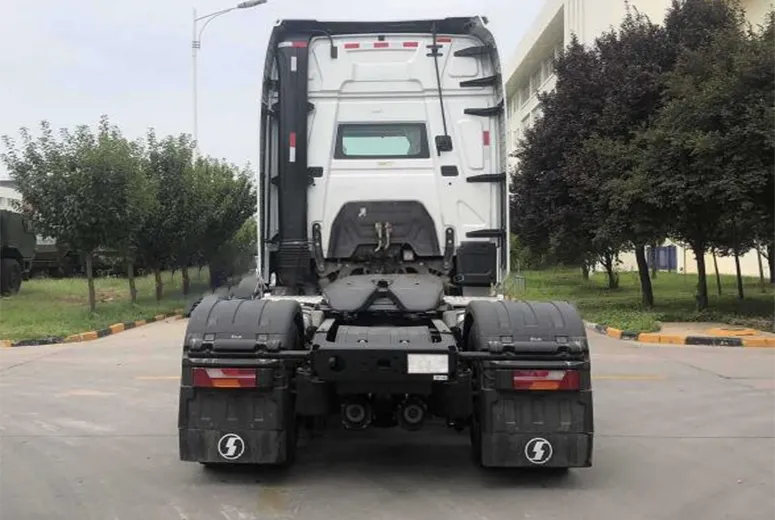Exploring the Connection Between Engine Performance and Transmission Efficiency in Vehicles
Understanding Engine and Transmission The Heart of a Vehicle
The engine and transmission are two of the most critical components in a vehicle, working synergistically to deliver power and efficiency. When it comes to automotive technology, understanding the relationship and function of the engine and transmission is essential for any car enthusiast or potential car buyer. This article will delve into the role of the engine and transmission, their types, and how they impact vehicle performance.
The Engine The Powerhouse of the Vehicle
At the heart of every vehicle lies its engine, often viewed as the powerhouse that converts fuel into mechanical energy. Internal combustion engines, which are the most common type found in cars today, operate on the principle of burning fuel (usually gasoline or diesel) to create a series of small explosions. These explosions drive the pistons within the engine’s cylinders, converting this linear motion into rotational motion, which ultimately powers the vehicle.
There are various types of engines, including inline, V-type, flat, and rotary engines. Each configuration offers distinct advantages in terms of size, weight, and performance characteristics. For instance, V-type engines can provide a balance of power and smoothness, while inline engines are generally simpler and more cost-effective to manufacture.
In recent years, the automotive industry has witnessed a significant shift towards hybrid and electric engines. Hybrid engines use a combination of conventional fuel and electric power for improved fuel efficiency and reduced emissions. On the other hand, electric engines have eliminated the need for fuel altogether, relying solely on batteries to power electric motors. This shift not only enhances environmental sustainability but also offers new possibilities in vehicle design and technology.
The Transmission The Key to Power Distribution
While the engine generates power, the transmission is responsible for distributing that power to the wheels. Essentially, the transmission serves as the intermediary between the engine and the drivetrain, allowing the vehicle to accelerate, decelerate, and maintain speed efficiently. It achieves this by changing the gear ratios, which alters the torque and speed delivered to the wheels based on driving conditions.
engine transmission

There are two primary types of transmissions manual and automatic. Manual transmissions require the driver to engage and disengage gears using a clutch and gear stick, offering greater control over the vehicle’s power. On the other hand, automatic transmissions shift gears automatically based on speed and power needs, providing a more convenient driving experience, especially in urban environments.
In recent years, continuously variable transmissions (CVTs) have gained popularity, especially in hybrid vehicles. CVTs provide a seamless transition through an infinite number of gear ratios, enhancing fuel efficiency and performance. They allow the engine to operate at its most efficient RPM, leading to smoother acceleration and improved fuel economy.
Engine and Transmission A Working Relationship
The interplay between the engine and transmission is crucial for optimizing vehicle performance. A powerful engine paired with an inefficient transmission can lead to poor acceleration and increased fuel consumption. Conversely, a well-designed transmission can make even a modest engine perform remarkably well. Manufacturers spend considerable time and resources engineering the right balance between these two components to achieve desired performance metrics such as horsepower, torque, and fuel efficiency.
Furthermore, advancements in technology, such as electronic control units (ECUs) and adaptive transmission systems, have revolutionized how engines and transmissions interact. Modern vehicles now utilize sophisticated computer systems to optimize power delivery and improve overall driving dynamics. These systems can learn driving habits and adjust performance accordingly, enhancing both comfort and efficiency.
Conclusion
In conclusion, the engine and transmission are paramount in defining a vehicle’s performance and efficiency. As technology continues to evolve, the dynamics between these two components will likely witness further innovation, leading to more powerful, efficient, and environmentally friendly vehicles. For consumers and car enthusiasts alike, understanding how engines and transmissions work together will ensure informed decisions and a greater appreciation for the intricacies of automotive design. Whether you are cruising down the highway or navigating city streets, it is this intricate dance between engine and transmission that ultimately drives your journey forward.
-
Fast Gearbox Transmission Parts Slave Valve – Durable & Reliable SolutionNewsJul.28,2025
-
Hydraulic Lock Assembly for SHACMAN Truck Parts – Durable & ReliableNewsJul.28,2025
-
SINOTRUK HOWO 84 Electric Dump Truck for Eco-Friendly Heavy HaulingNewsJul.26,2025
-
The Fast 16-Gear Manual Transmission Assembly for Heavy TrucksNewsJul.25,2025
-
Mercedes Benz Actros 1848 42 Tractor Truck for Sale - Reliable PerformanceNewsJul.24,2025
-
High-Quality Water Pump Assembly for Sinotruk Trucks – Durable & ReliableNewsJul.23,2025
Popular products

























